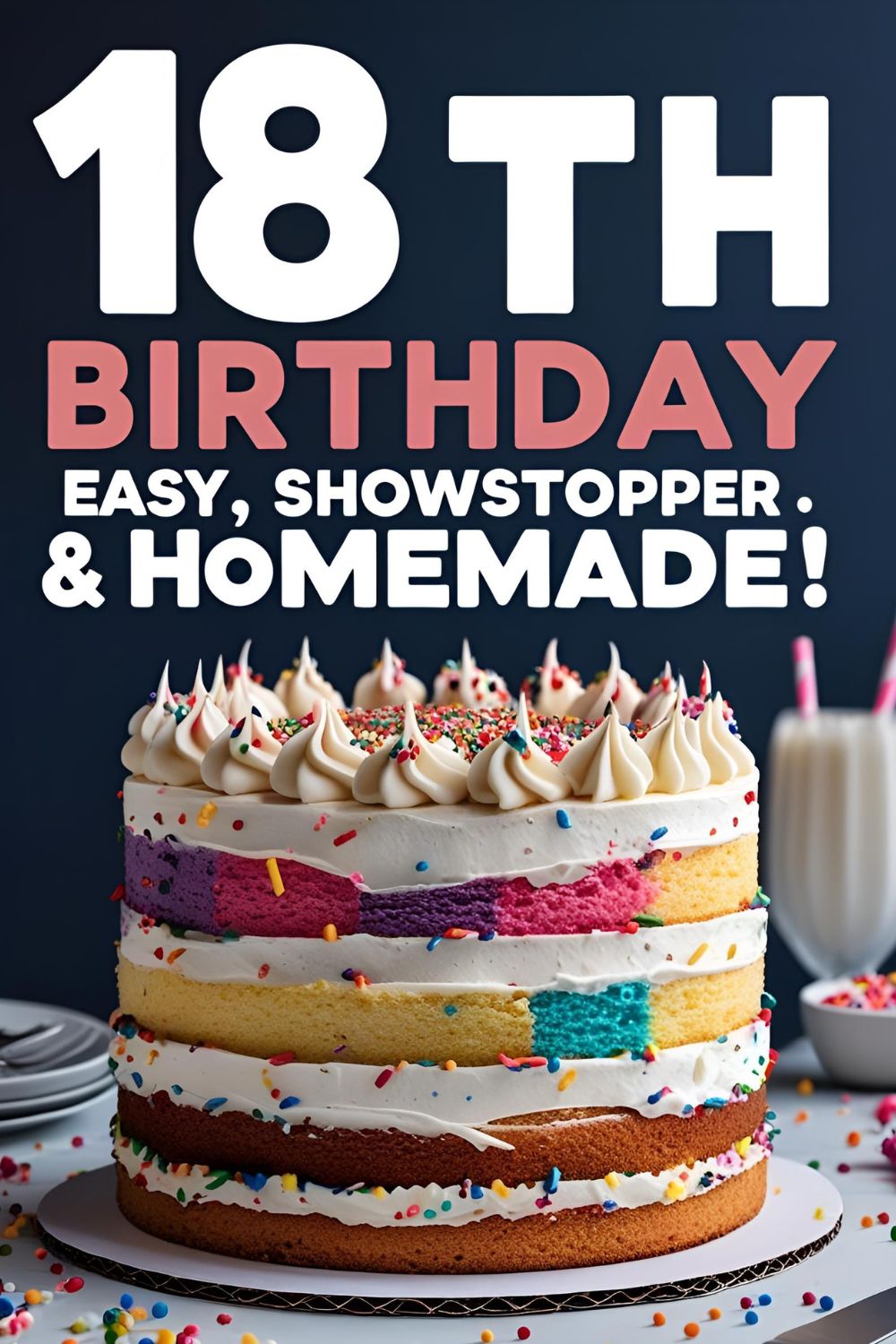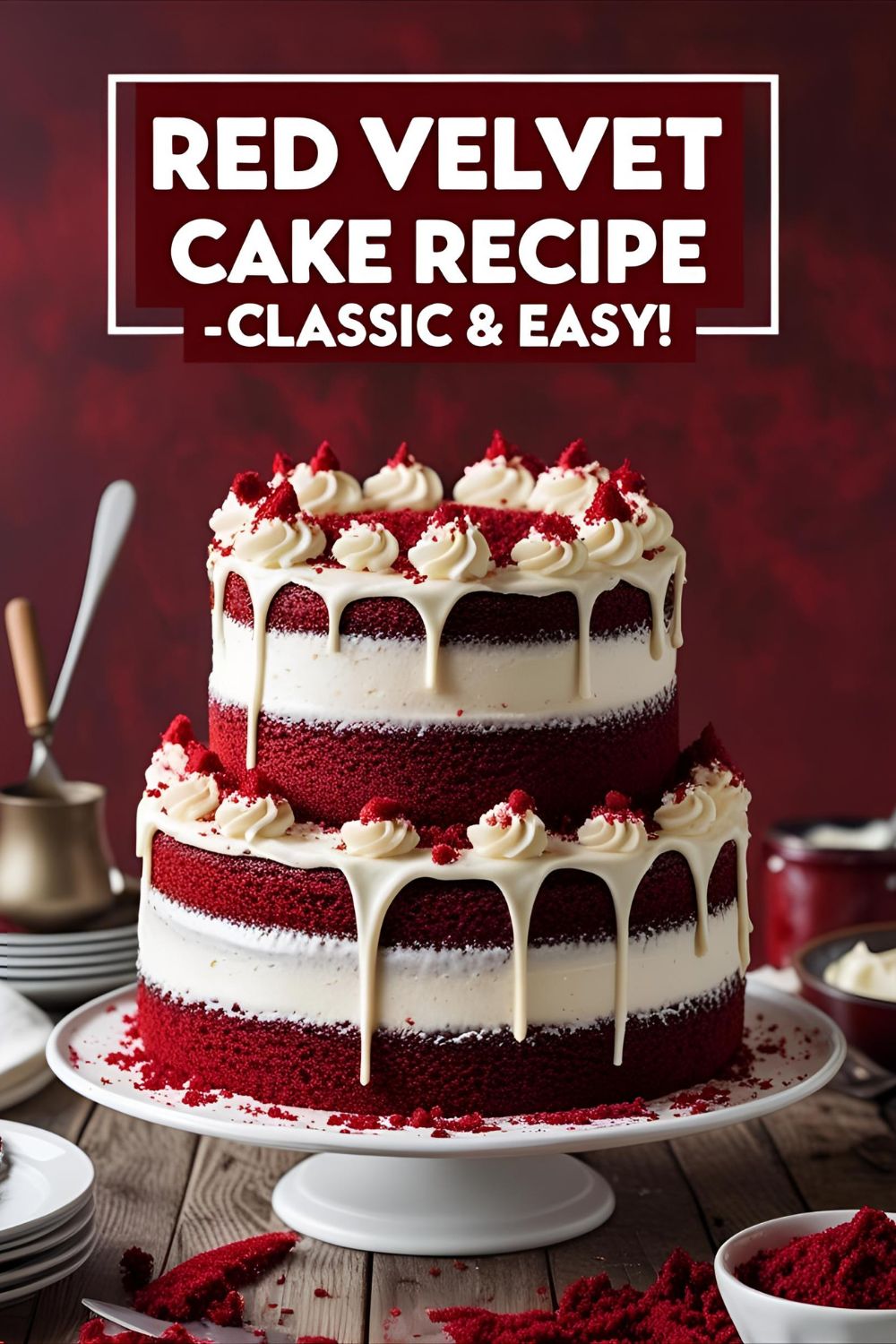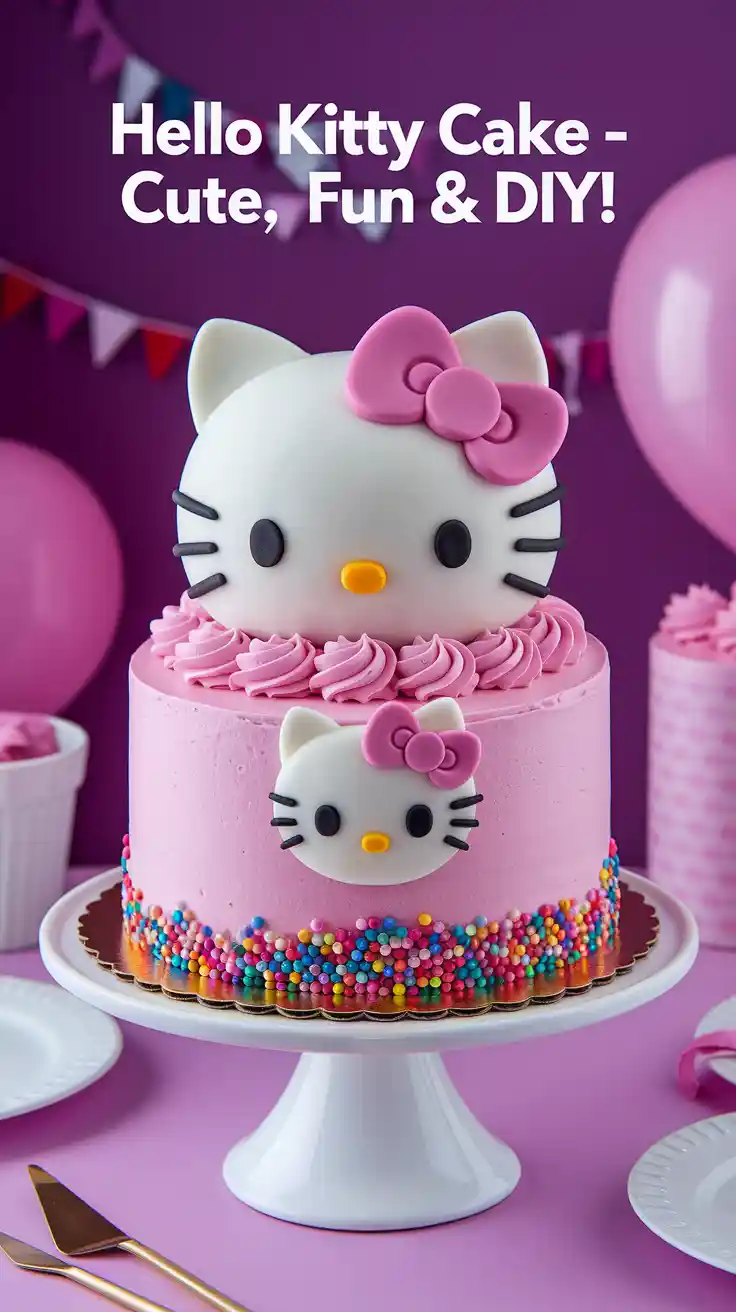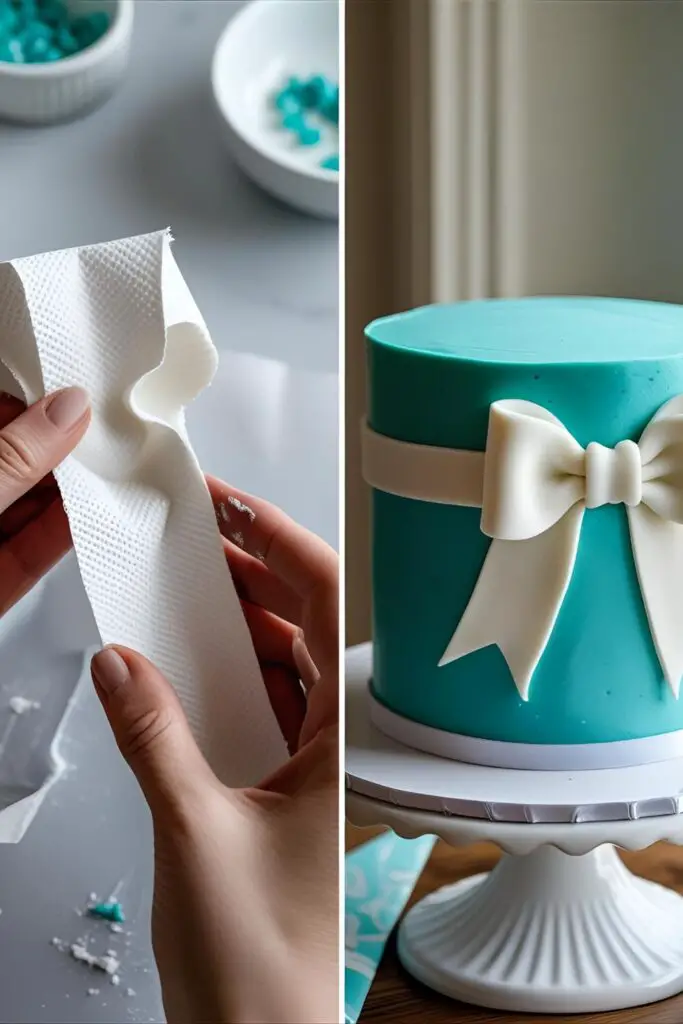You know that feeling when you see a cake that looks less like a dessert and more like a perfectly wrapped gift from a high-end boutique? It’s pristine, elegant, and topped with a gorgeous, flowing bow that seems utterly impossible to create with human hands. You think to yourself, “That must be the work of a professional with years of training and possibly a team of tiny, sugar-crafting elves.” What if I told you that you, yes YOU, can create that stunning bow cake design in your very own kitchen?
Forget being intimidated. Today, we’re pulling back the curtain on this iconic cake decoration. We’re going to demystify the process and turn you into the kind of baker who casually presents a cake that looks like a work of art.
This isn’t just about baking a cake; it’s about creating a centerpiece. It’s about mastering a technique that will elevate every celebration cake you make from here on out. This is your official entry into the world of high-end cake decorating, and trust me, it’s easier than you think.
Why This Recipe Is a Total Gift
So, why should you tackle a bow cake design? Isn’t it easier to just, you know, stick a candle in it and call it a day?
First, it’s the definition of elegance. Nothing transforms a simple cake into a sophisticated masterpiece faster than a beautiful bow. It’s perfect for birthdays, baby showers, anniversaries, bridal showers—you name it. A great bow cake design is a universal symbol of celebration.
Second, it makes you look like a sugar artist. This is one of those techniques that has a massive “wow” factor. Your friends and family will be convinced you’ve secretly been attending night classes at a prestigious culinary institute. We’ll just keep the secret of how simple it actually is between us. 😉
Finally, it’s a skill you’ll use forever. Once you know how to make a fondant bow, you can change the size, color, and pattern for endless creative possibilities. You’re not just learning one bow cake design; you’re learning a foundational skill in cake decorating.
The Ingredients for Your Edible Present
Let’s gather the components. The cake itself is a simple, sturdy, and delicious canvas for our artwork.
For the Perfect Butter Cake Canvas:
- 3 cups all-purpose flour
- 1 tablespoon baking powder
- 1/2 teaspoon salt
- 1 cup unsalted butter, at room temperature
- 2 cups granulated sugar
- 4 large eggs, at room temperature
- 1 cup whole milk, at room temperature
- 1 teaspoon pure vanilla extract
For the Smooth Buttercream Frosting:
- 1 cup unsalted butter, softened
- 4 cups powdered sugar, sifted
- 3-4 tablespoons heavy cream or milk
- 1 teaspoon vanilla extract
- Pinch of salt
For the Star of the Show: The Fondant Bow:
- About 1 lb of ready-made fondant: White is versatile, or buy the color you want to use.
- 1-2 teaspoons of Tylose Powder (or CMC Powder): This is the magic ingredient! It helps the fondant dry hard and hold its shape.
- Shortening: To prevent the fondant from sticking to your hands and work surface.
- Edible glue or a small amount of water: To assemble the bow.
The Tools of the Trade
Every artist needs a good set of brushes. For this project, you’ll need a few specific tools to make life easier.
- A Stand Mixer: A KitchenAid Stand Mixer makes whipping up the cake batter and buttercream a breeze.
- Round Cake Pans: Two 8-inch round cake pans for a classic, tiered look.
- Fondant Rolling Pin: A non-stick fondant rolling pin is essential for getting a smooth, even thickness.
- Fondant Smoother: To get that flawless, professional-looking buttercream or fondant base on your cake, a fondant smoother is a must-have.
- Pizza Cutter or Pastry Wheel: This is the best tool for cutting long, clean, straight strips of fondant for your bow.
- Tylose Powder (CMC): I’m listing it again because it’s that important. This gumpaste-like hardener is what makes a structural bow cake design possible.
- Paper Towels or Foam Formers: You’ll need something to stuff inside your bow loops to hold their shape while they dry. Rolled-up paper towels work perfectly.
Step-by-Step: Tying It All Together
Ready to unwrap the secrets to a perfect bow cake design? Let’s go.
Part 1: Bake and Frost Your Canvas
Step 1: Bake the Cake Preheat your oven to 350°F (175°C). Grease and flour your two 8-inch cake pans. In a large bowl, whisk together the flour, baking powder, and salt. In a separate bowl (preferably a stand mixer), cream the butter and sugar together until light and fluffy. Beat in the eggs one at a time, followed by the vanilla. Alternate adding the dry ingredients and the milk, beginning and ending with the dry. Mix until just combined—do not overmix. Divide the batter between the pans and bake for 25-30 minutes.
Step 2: Make the Buttercream and Frost the Cake While the cakes cool, beat the softened butter until creamy. Gradually add the powdered sugar, cream, vanilla, and salt. Beat until light and fluffy. Once your cake layers are completely cool, level them and apply a smooth, even coat of buttercream. A crumb coat first is always a good idea! Chill the frosted cake while you make the bow.
Part 2: Constructing the Fondant Bow
Step 3: Prep Your Fondant Take about half of your fondant and knead a teaspoon of Tylose powder into it until fully incorporated. This will make it firm up nicely. Rub a little shortening on your work surface and rolling pin.
Step 4: Create the Bow Loops Roll out your prepared fondant to about 1/8-inch thickness. Using your pizza cutter or pastry wheel, cut two identical rectangles, about 2 inches wide and 6-7 inches long. At each end of the rectangles, cut a notch or “V” shape, like the end of a ribbon. Fold one rectangle over so the two notched ends meet in the middle, creating a loop. Pinch the ends together securely with a dab of edible glue or water. Stuff the loop with a rolled-up paper towel to hold its shape. Repeat with the second rectangle.
Step 5: Create the Tails and Knot Roll out more fondant. Cut two more strips (the “tails”) of a similar width and desired length. Cut a V-notch at one end of each tail. For the center knot, cut a small, shorter rectangle (about 2 inches by 3 inches). Scrunch it up slightly in the middle, like a real knot.
Step 6: Let It Dry! Place all your bow pieces on a parchment-lined tray. Let them air dry for at least 4-6 hours, but overnight is best. They need to be firm and hold their shape before you try to assemble them on the cake. This is a critical step for a successful bow cake design.
Part 3: The Grand Assembly
Step 7: Assemble the Bow Once the pieces are dry and firm, it’s time to assemble. Place the two tail pieces on top of your chilled cake, angling them outwards. Place the two bow loops on top, meeting in the center. Finally, use a dab of frosting or edible glue to place the center “knot” piece over the spot where the loops meet. And voilà! A perfect bow.
Calories & Nutritional Info
A declaration from the department of deliciousness.
- Serving Size: One elegant slice
- Calories: It’s a gift. You don’t ask about the price of a gift, and you don’t ask about the calories. (But it’s cake, so… you know. A festive amount.)
- Primary Function: To induce happiness and awe.
- Pairs well with: Compliments and champagne.
Common Mistakes to Avoid (Don’t Let It Unravel)
Let’s sidestep the common pitfalls on the path to a perfect bow cake design.
- The Sad, Floppy Bow: You skipped the Tylose powder. I know, it seems like an extra step, but without a hardening agent, your fondant will sag into a puddle of disappointment. It will not hold its shape.
- The Cracked, Elephant-Skin Bow: Your fondant was rolled too thin, or you let it sit out too long before shaping it. Keep the fondant you’re not actively working with covered with plastic wrap to prevent it from drying and cracking.
- The Lumpy Canvas: You tried to put your beautiful bow on a lumpy, bumpy cake. A smooth buttercream base is essential. Take the time to get a nice, even coat of frosting before you even think about placing your bow.
- The Impatient Assembler: You tried to assemble the bow before the pieces were fully dry. This results in the aforementioned floppy bow. Patience is a virtue, especially in cake decorating. Let it dry overnight.
Variations & Customizations
Once you’ve mastered the basic bow cake design, the possibilities are endless.
- Patterns and Prints: Before cutting your fondant strips, use an embossed rolling pin to create a beautiful texture. You can also paint polka dots or stripes onto the bow with edible paint for a fun, whimsical look.
- The Buttercream Bow (No Fondant!): If you despise fondant, you can create a 2D bow. Frost your cake smoothly. Use a large petal tip (like a Wilton #125) to pipe two large, ruffled loops and tails directly onto the cake. It gives a softer, charming effect.
- The Gift Box Cake: Go all in on the “present” theme. Use fondant strips to create “ribbons” that cross over the top of the cake, meeting in the middle under your beautiful bow. This is a truly classic bow cake design.
Frequently Asked Questions (All Tied Up)
Got questions? I’ve got the answers all wrapped up for you.
1. What is the best material to make a cake bow? Fondant mixed with a little Tylose powder (or CMC powder) is the best choice. This mixture, often called modeling paste, dries hard and holds its shape perfectly, which is essential for a structural bow.
2. How far in advance can I make a fondant bow? You can make it days or even weeks in advance! Once it’s completely dry and hard, store it in an airtight container in a cool, dry place (not the fridge).
3. How do you get a fondant bow to stick to the cake? A few dabs of fresh buttercream or royal icing work like a charm. Just apply a little to the bottom of your bow pieces before placing them on the chilled cake.
4. Why is my fondant bow cracking when I shape it? Your fondant is likely too dry. Try kneading in a tiny bit of shortening to make it more pliable. Also, work quickly and keep any fondant you’re not using covered.
5. Can I make a bow without fondant? Yes! You can pipe a simpler, flat bow design using buttercream and various piping tips. You can also use modeling chocolate, which behaves similarly to fondant.
6. How do I store a finished bow cake design? Because of the fondant, it’s best to store the cake at cool room temperature if it’s for the next day. If you need to store it longer, the fridge is okay, but be aware that condensation can make the fondant a bit shiny or sticky when you take it out.
7. What is Tylose powder and is it really necessary? Tylose (or CMC) is a food-safe hardening agent. It’s necessary if you want your bow to be stiff, hold its shape perfectly, and not wilt over time. For a structural bow cake design, it is absolutely essential.
Final Thoughts
And there you have it. You’ve officially unlocked a new level in your baking journey. You’re no longer just someone who bakes cakes; you are a creator of edible art, a cake couturier, a master of the sugar arts. Okay, maybe I’m getting carried away, but you get the idea.
The next time you need a cake for a special occasion, you have the power to create something truly memorable. So go ahead, tie one on. I can’t wait to see your beautiful bow cake design creations!




